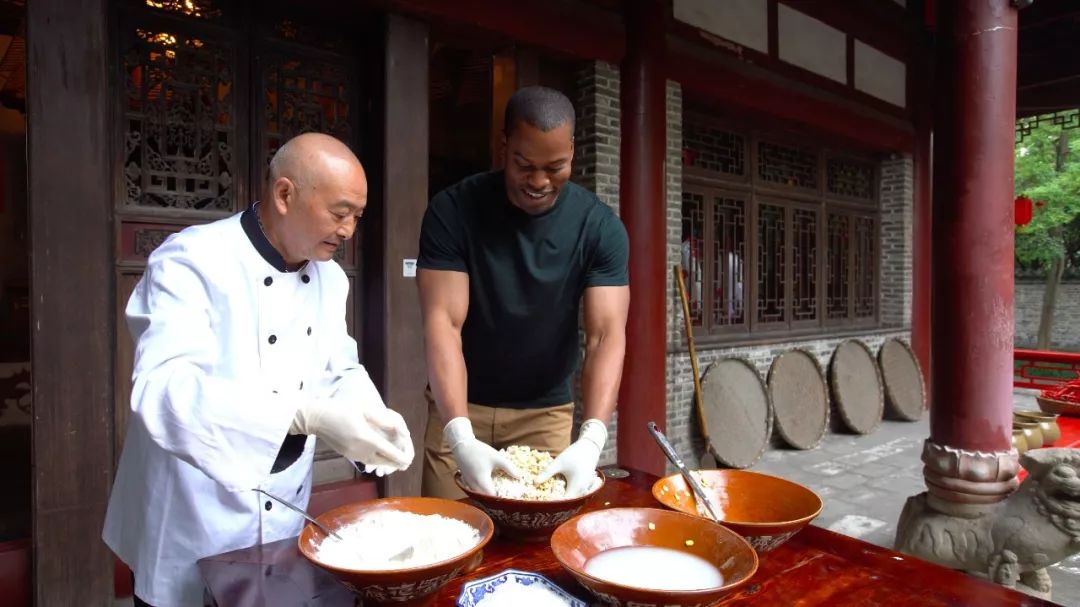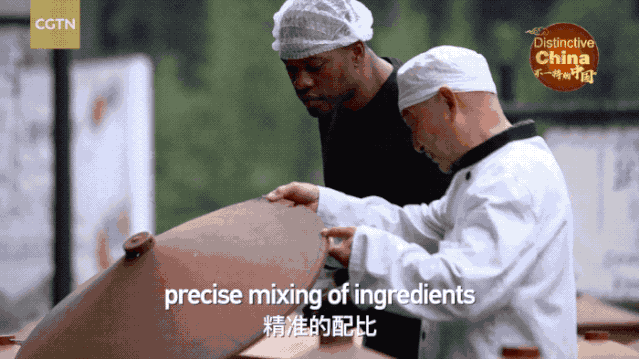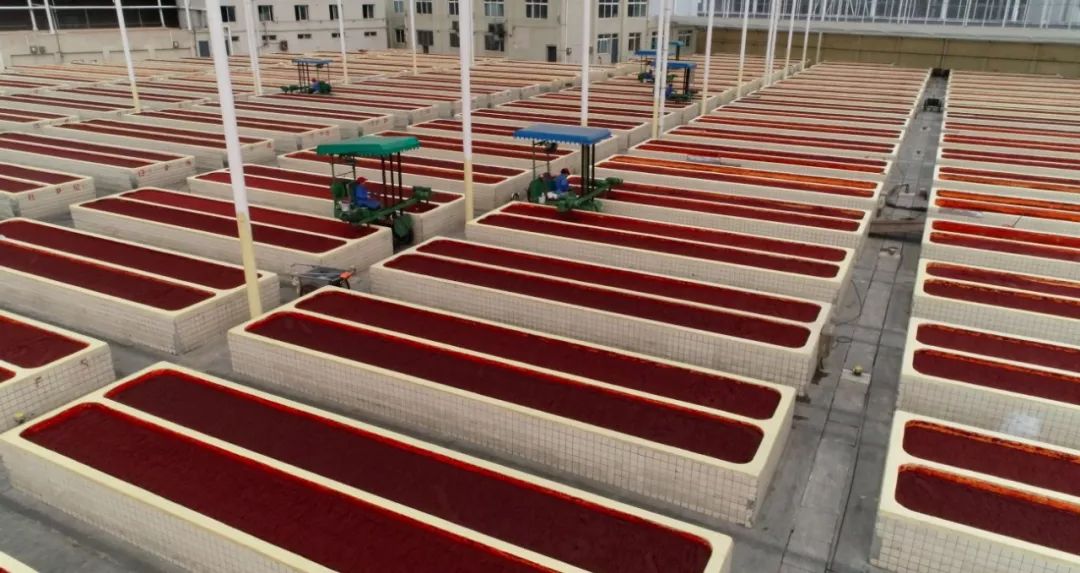编者按:《舌尖上的非遗》(The ULTIMATE Chinese Food Tour)是CGTN新媒体文化频道为庆祝中华人民共和国成立70周年特别策划的九集系列片。主持人Matthew Arrington Watson深入非遗美食的发源地,向非遗传承人学习美食制作技艺,品尝中华美食,做一个快乐的“吃播”。
试问有谁不曾为川菜的麻辣鲜香而倾倒,但又有多少人知道川菜摄人心魄的味道究竟从何而来?《舌尖上的非遗》第二站,我们来到四川成都,探索正宗川味背后的秘密。
竹林深深,鸟鸣婉转。在川菜博物馆的开放式就餐区,美国小哥Matthew坐在一条长凳上,倚着一张木桌,品尝四道正宗的川菜——鱼香肉丝、宫保鸡丁、水煮牛肉以及麻婆豆腐。不擅长吃辣的Matthew边吃边喝水解辣,甚至拿出他的秘密武器——小风扇,试图给直冲上头的辣劲降温。然而,嘴却诚实地吃个不停。
让Matthew停不下来的正是川菜的香。“辣中有股浓郁醇厚的香味让人欲罢不能,” Matthew由衷地感叹道。尽管食材不同,但是这四道菜却使用了同一种酱料——被誉为“川菜之魂”的郫县豆瓣酱。

Stepping inside Chengdu’s Sichuan Cuisine Museum is an experience. Filled with manicured gardens and ponds, exhibition halls and restaurants, it’s like a theme park for all things Sichuan. This is where I found Zhang Anqiu, the provincial-level inheritor of the “soul of Sichuan cuisine” — Pixian broad bean paste.
The paste is omnipresent in food here, and without its spicy kick, the true taste of Sichuan would be absent.
郫县豆瓣酱的历史可追溯至清朝,诞生于偶然间。虽然原材料只需五样——蚕豆、红辣椒、面粉、食盐和水,但传统豆瓣酱的制作工艺并不简单。
As the story goes, the creator of the paste, Chen Yixian, moved to Pixian during the Qing Dynasty (1644-1911) with beans in tow. The beans molded, and Chen decided to salvage them by drying them in the sun and mixing them with other ingredients. His concoction became a hit and the core of one of China’s most popular cuisines.
Five simple ingredients are needed: broad beans, chilies, flour, salt and water.

从严苛的选材开始,经过豆瓣的捞煮、浸泡、制曲、发酵,以及红辣椒的盐渍、发酵之后,将豆瓣和红辣椒按比例混合搅拌,进行再次发酵。“晴天晒,雨天盖,白天翻,夜晚露”。日复一日的观察与翻晒,对温度和湿度的精准把握,短则一年,长则三至五年,才能造就色香味俱佳的豆瓣酱。
复杂的工艺,艰苦而漫长的等候,传统豆瓣酱的制作过程考验着豆瓣酱匠人们的经验和感觉。正如郫县豆瓣酱传统制作技艺省级传承人张安秋所说,“师傅领进门,修行在个人”。

I mirrored Zhang as went through each step of the preparation process, adding each ingredient and mixing them all by hand. He plucked the stem off of each chili with the speed and precision of a machine before washing and chopping them.
The final product is fermented in large jars outside on the museum grounds and tended with care by the inheritor, who periodically aerates each one. According to Zhang, some of the paste has been fermenting for as long as 10 years.
From fish-flavored shredded pork to mapo tofu, you can taste the finished product in the many food stalls at the museum, which I wasted no time in doing.
Only a few miles away, Dandan makes the area’s signature condiment on a much larger scale. Stepping inside the facility, you’re immediately engulfed in a scent of chilies; it’s no doubt the spiciest air I’ve ever breathed.

A field of large vats holding an estimated 2,000 tons of Pixian broad bean paste fill the massive room. To cover such a large area, the vats are aerated by a small fleet of machines that can handle the volume while keeping the famous paste in peak condition. I was told the paste, still the color of red brick, had been fermenting for around six months at the time of my visit.
在四川,几乎家家都有一坛豆瓣酱作为“镇厨之宝”,离了这个宝贝就做不出地道的川味。就连人见人爱的四川火锅也要仰仗豆瓣酱来提色增味呢!
经历了一整天拌豆瓣、剁辣椒、翻晒豆瓣酱,Matthew已经深刻地体会到川菜好吃背后的不易了。你瞧,他已经迫不及待地要试一下正宗的四川火锅了!

Impressively, the quality of the broad bean paste is not sacrificed in the scale of the operation. Later, at dinner, while happily filling my stomach with double-cooked pork and kung pao chicken, I could taste the soul of Sichuan in every bite.
限 时 特 惠: 本站每日持续更新海量各大内部创业教程,一年会员只需98元,全站资源免费下载 点击查看详情
站 长 微 信: lzxmw777






